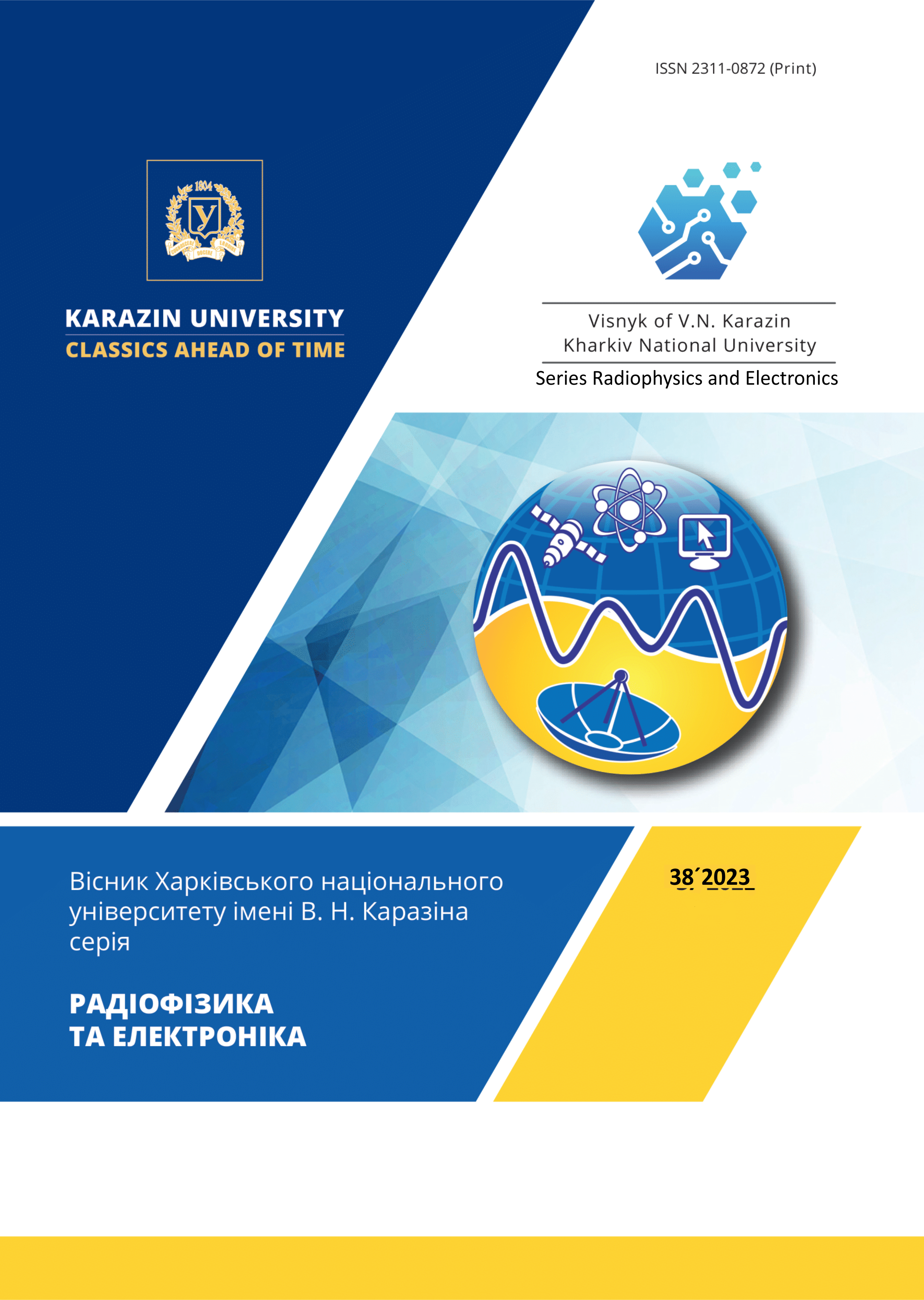Masking mode of functioning of a slot coupling element
Abstract
Relevance. The problems of masking, hiding or reducing the visibility of material objects in various ranges of electromagnetic waves are of great importance at the present time. Therefore, the development of new methods for solving such problems is undoubtedly relevant.
Goal of the work. The purpose of this work is to substantiate the possibility of using a narrow linear slot (cut in a flat ideally conducting screen and containing a material inclusion in its cavity) as a functional element of a masking coating.
Materials and methods. Numerical simulation (solution of the inverse diffraction problem regarding the value of the magnetic permeability of the insert material in the cavity of the slot) in a rigorous electrodynamic formulation was carried out for the case of a vibrator-slot diffractive structure in the centimeter wavelength range.
Results. As a result of the research, it was found that in order to provide a masking mode for the operation of the slot, the material of the slotted insert must have the properties of a special metamaterial - a hybrid-type magnet.
Conclusions. The solution of the diffraction problem for the case of the interaction of a narrow slit with a scattering vibrator showed the validity of the possibility of using a slit (cut in an infinite screen of finite thickness) as a functional element of a masking coating. It has been established that in this case the material of the slotted insert should have the properties of a special metamaterial - a hybrid-type magnetic. If necessary, the justification can be generalized to other types of scattering objects.
Downloads
References
Dubinov AE, Mytareva LA. Invisible cloaking of material bodies using the wave flow method. Physics–Uspekhi. 2010; 53: 455–479. http://dx.doi.org/10.3367/UFNe.0180.201005b.0475
Pendry JB, Schurig D, Smith DR. Controlling electromagnetic fields. Science 312. 2006. https://doi.org/10.1126/science.1125907
Tie JC, David RS, Ruopeng L. Metamaterials. Theory, Design and Applications. Springer Science+Business Media. 2010. http://dx.doi.org/10.1007/978-1-4419-0573-4
Li J, Pendry JB. Hilling under the carpet: a new strategy for cloaking. Phys. Rev. Lett. 2008; 101 203901. https://doi.org/10.48550/arXiv.0806.4396
Nesterenko MV, Katrich VA, Penkin YM, Berdnik SL, Dumin OM. Combined vibrator-slot structures: theory and applications. Springer Nature Swizerland AG. 2020. http://dx.doi.org/10.1007/978-3-030-60177-5
Nesterenko M.V., Katrich VA, Penkin YM, Berdnik SL. Analytical and hybrid methods in theory of slot-hole coupling of electrodynamic volumes, Springer Science+Business Media. 2008. https://doi.org/10.1007/978-0-387-76362-0
Abramovits MIA, Stegun IA. Handbook of mathematical functions with formulas, graphs and mathematical tables. Applied mathematics series, vol 55. National Bureau of Standards. 1964.
Nesterenko MV. Analytical methods in the theory of thin impedance vibrators. Progress In Electromagnetics Research B. 2010; 21: 299-328. https://doi.org/10.2528/pierb10020105




